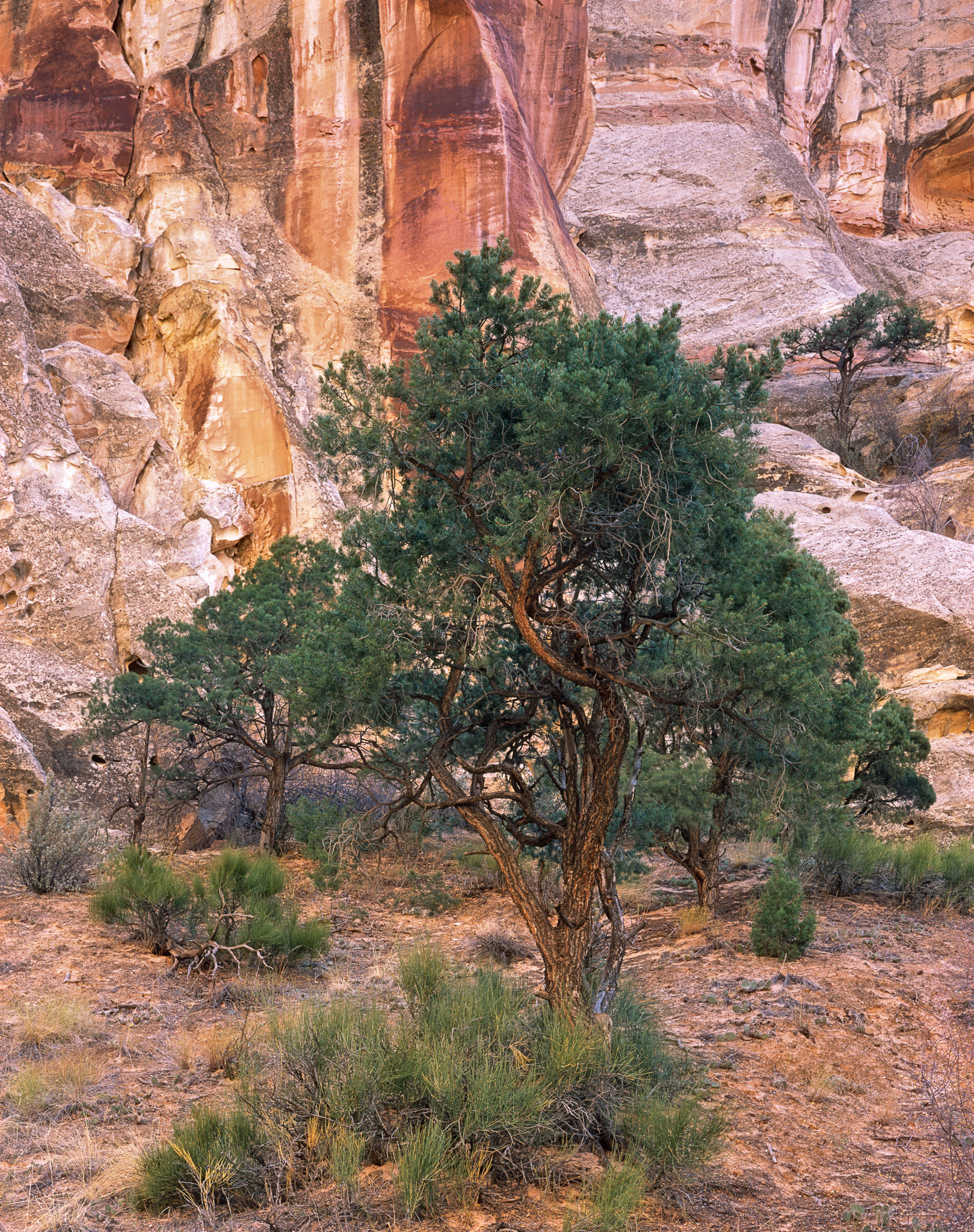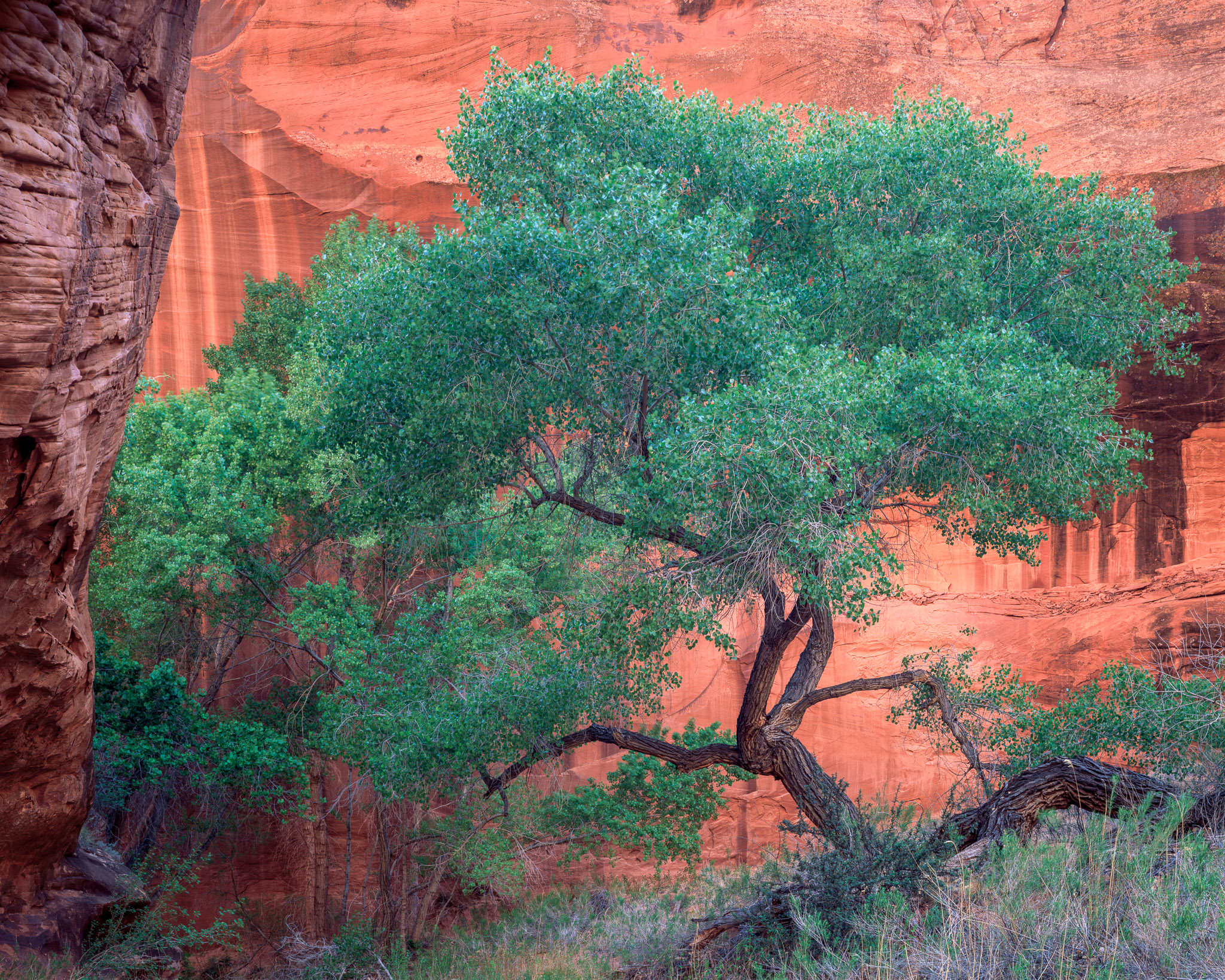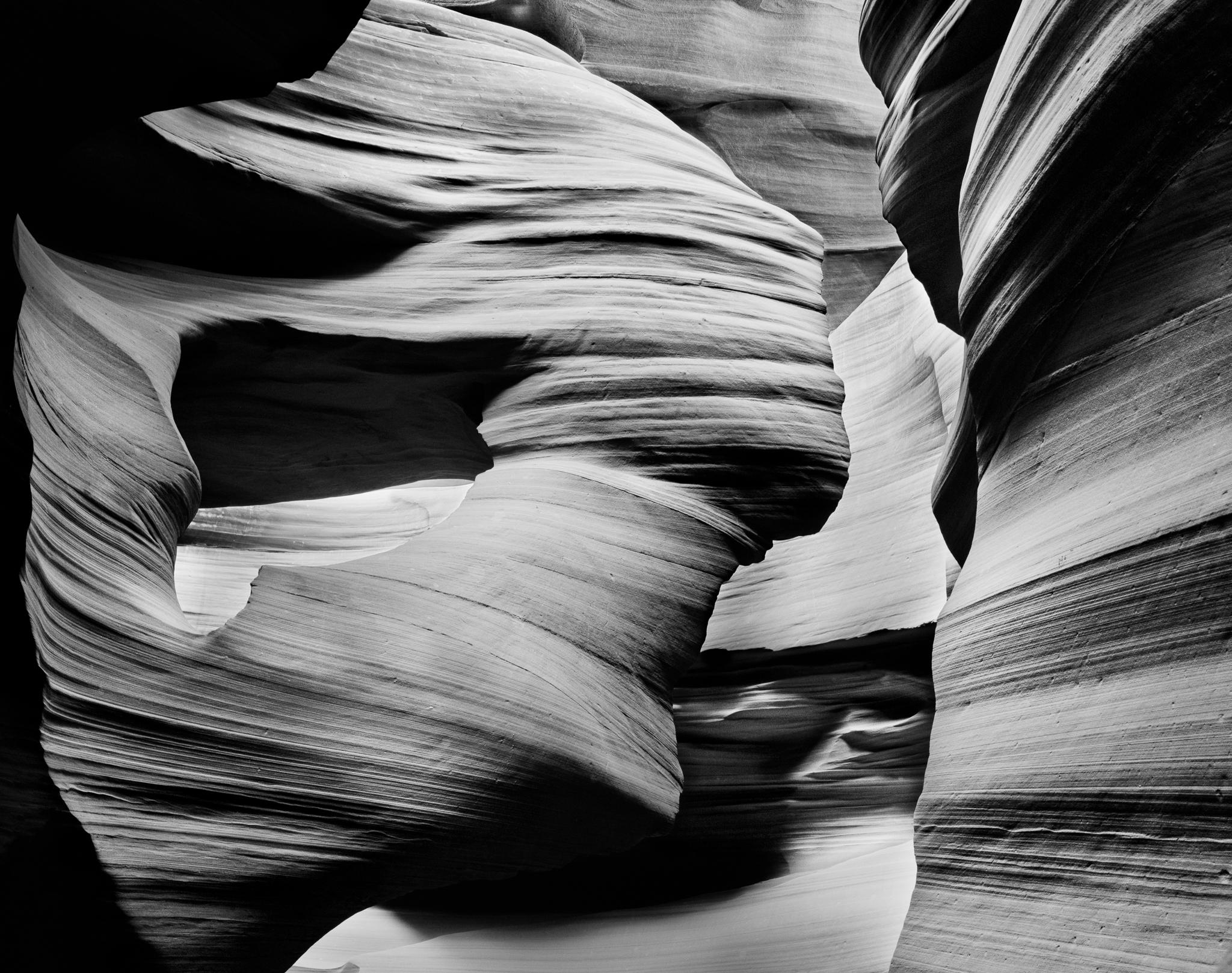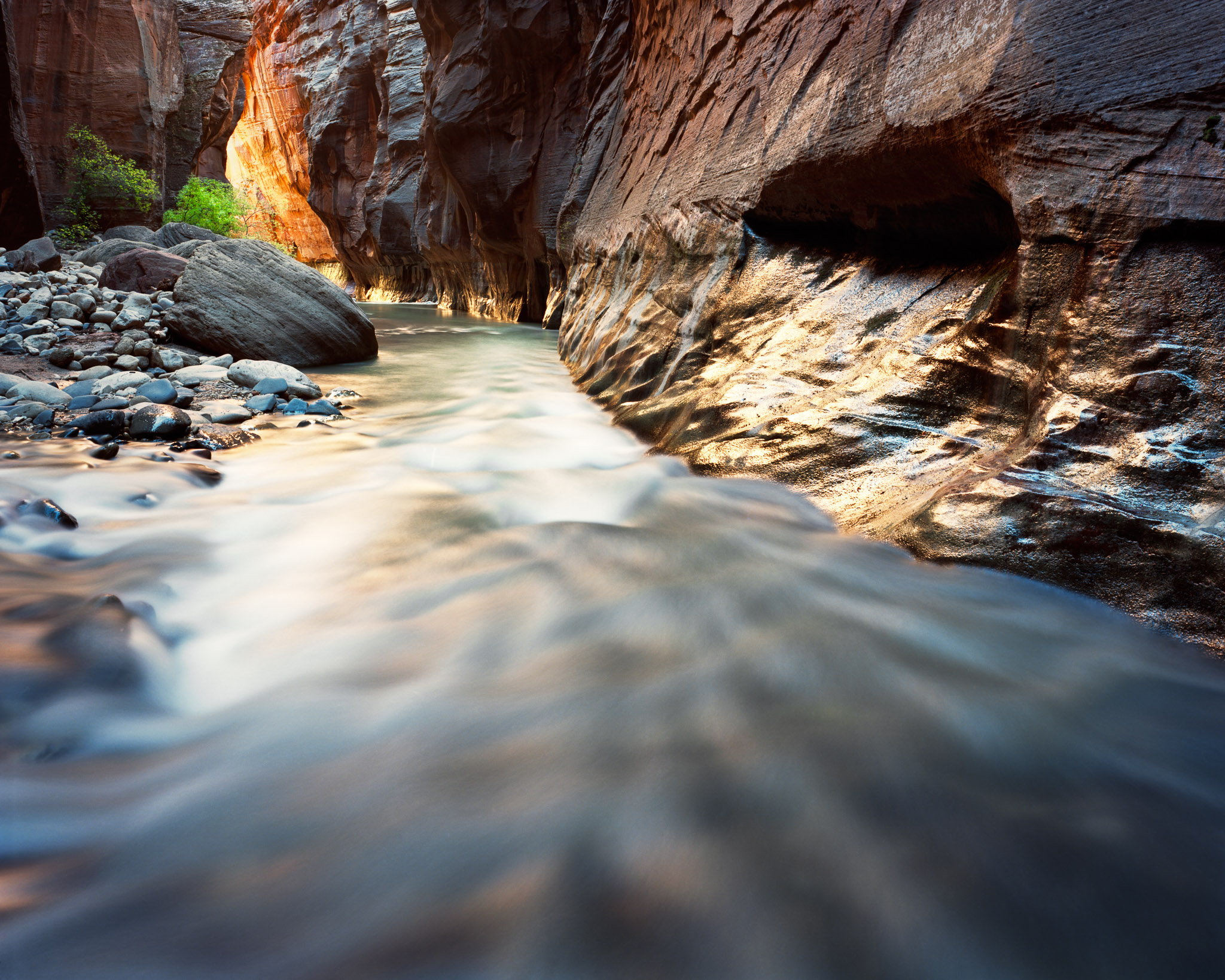The Magic of Bounce Light in Canyon Photography
Discover the unique qualities of reflected light in canyon photography. Learn techniques for capturing the soft, warm glow that transforms ordinary scenes into extraordinary images in the American Southwest.

Introduction
As a landscape photographer specializing in the American Southwest, I have developed a profound appreciation for the unique qualities of reflected light, particularly in canyons. This magical light, bouncing off canyon walls, transforms ordinary scenes into extraordinary ones. In this blog post, I will share my insights and techniques for capturing the beauty of bounce light in your landscape photography.
What is Bounce Light?
Bounce light, or reflected light, occurs when sunlight hits a surface and is redirected onto another area. In nature photography, the canyon wall or ceiling acts as a giant bounce board, creating soft light that illuminates the scene in ways that direct sunlight cannot. While studio photographers use a white board or bounce flash to create bounce and achieve similar results, landscape photographers rely on natural reflective surfaces to serve as their light source. The effect is mesmerizing, adding depth, contrast, and a painterly quality to your images.
Why Bounce Light is Ideal for Canyons
The softness and warmth of bounce light make it ideal for canyon photography. Unlike direct sunlight, which can create harsh shadows and highlights, bounce light creates soft, diffused illumination leading to a more balanced exposure. Think of the canyon walls as a natural lighting setup where the rock surface functions as both a reflective surface and fill light. The warm tones often present in canyon walls enhance the overall color palette of your photos—similar to how photographers in flash photography use colored gels, but entirely natural.
The diffuse nature of bounce light brings out textures and details in the canyon rock, which can be lost under the intense contrast of direct sunlight. Just as studio photographers position their camera left or right relative to their bounce surface to control shadow direction, landscape photographers must consider their position relative to illuminated canyon walls. Additionally, the interplay of light and shadow adds a three-dimensional quality to your images, making them more engaging and lifelike.

Pinyon pine bathed in soft bounce light, showcasing the gentle illumination that enhances natural subjects
Tips for Capturing Bounce Light
Positioning and Proximity
Position Yourself Near Reflective Surfaces: The closer you are to surfaces that reflect light, such as canyon walls or large boulders, the stronger and more defined the bounce light will be on your subject. The quality of the bounce surface—its color, texture, and angle—directly affects the character of light that reaches your scene. A red sandstone wall will create warm light, while a white limestone surface creates more neutral illumination, similar to how photographers choose between a white board or colored reflector in a controlled lighting setup.
Indirect Illumination: The strength of bounce light increases as it nears your subject without directly hitting it. This indirect illumination creates a soft, even glow with less dynamic range, making exposure settings simpler and more forgiving.
Equipment and Settings
Use a Tripod: In conditions where natural light is minimal, a tripod is indispensable. It ensures sharp, clear images even with longer exposure times, allowing you to capture the delicate nuances of bounced light without motion blur.
Set Correct Exposure: Because bounce light is more uniform, setting your exposure correctly is generally straightforward. Start with a balanced exposure and fine-tune as needed to highlight the subtle variations in light and shadow. I typically begin with camera settings around f/11-f/16 for maximum depth of field, adjusting ISO and shutter speed based on the available light intensity.

Crooked cottonwood tree illuminated by reflected canyon light, demonstrating the perfect balance of exposure in bounce light conditions
Understanding Color Temperature in Bounce Light
One of the most striking characteristics of bounce light in canyon environments is the warm color temperature it creates. When sunlight reflects off sandstone canyon walls—particularly the red and orange Navajo sandstone found throughout the Southwest—the reflected light takes on the color characteristics of the reflecting surface. Any colored surface will impart its hue onto the reflected light, creating dramatically different moods depending on the rock composition. This phenomenon creates the characteristic warm glow that makes canyon photography so distinctive.
The color temperature of bounce light can range from 3000K to 5000K depending on the color of the reflecting surfaces and the angle of the sun. During golden hour, when the sun is low on the horizon, the already warm direct sunlight becomes even warmer when it bounces off red rock surfaces. This creates extraordinary opportunities for capturing images with rich, saturated warm tones that feel almost surreal in their intensity.
When shooting with large format film, understanding these color shifts is crucial. Fuji Velvia film, with its already vibrant color saturation, can produce spectacular results when capturing warm bounce light. The film's characteristic response to warm tones amplifies the natural beauty of reflected canyon light. Digital photographers should be mindful of white balance settings—while auto white balance may try to neutralize the warm tones, manually setting the white balance to preserve these colors often produces more compelling and authentic results.
Best Locations for Bounce Light Photography
While bounce light can occur in any canyon environment, certain locations in the Southwest are particularly renowned for their exceptional reflected light conditions. Narrow slot canyons like Antelope Canyon near Page, Arizona, showcase bounce light at its most dramatic, with reflected light bouncing multiple times off opposing walls to create an ethereal glow. The narrow passages ensure that almost all light entering the canyon has been reflected at least once, creating uniformly soft illumination with extraordinary color saturation.
Bryce Canyon National Park's amphitheaters and hoodoo formations create complex bounce light scenarios where sunlight reflects off multiple surfaces simultaneously. The white and orange limestone formations act as natural reflectors, filling shadows with warm light that reveals detail in areas that would otherwise be lost in darkness. Similarly, Zion Canyon's towering walls create cathedral-like spaces where bounce light dominates most of the day, particularly in narrow sections like the Narrows where direct sunlight rarely reaches the canyon floor.
The Wahweap Hoodoos near Lake Powell offer another exceptional bounce light opportunity, with their light colored surfaces reflecting bright, clean light that creates a different character than the warm tones of red rock canyons. See my Wahweap Hoodoos fine art print for an example of how these unique formations interact with natural light. Each of these locations requires different approaches to exposure and composition, but all reward photographers who understand the principles of working with reflected light.
Technical Challenges and Solutions
Working with bounce light presents several technical challenges that differ from conventional landscape photography. Metering can be particularly tricky because the light levels may be significantly lower than in direct sunlight, and the color of the reflected light can fool both spot meters and matrix metering systems. I recommend taking test shots to verify your exposure settings before committing to the final composition. The solution is to meter from a neutral gray surface if available, or to bracket exposures to ensure you capture the full tonal range of the scene.
Dynamic range management becomes crucial when bounce light coexists with small areas of direct sunlight or bright sky visible in the composition. The contrast between bounced light and direct light can exceed the latitude of film or digital sensors. Large format film photography, particularly with transparency films like Velvia, requires precise exposure to maintain detail in both shadows and highlights. The use of graduated neutral density filters can help balance exposure when bright sky is visible, though in many canyon environments the walls themselves naturally vignette the sky.
Wind and camera stability pose additional challenges during the longer exposures often required in bounce light conditions. Even in seemingly calm canyon environments, subtle air movement can cause vegetation to blur during exposures of several seconds or longer. A sturdy tripod is essential, and waiting for moments of complete calm often makes the difference between a sharp image and a soft one. Using mirror lock-up on film cameras or electronic shutter on digital systems eliminates vibration and ensures maximum sharpness.
Conclusion
Capturing the magic of bounce light in canyons requires patience, skill, and a deep appreciation for the subtleties of natural light. By understanding the principles of reflected light and applying the tips shared in this post, you can elevate your landscape photography and create stunning images that showcase the beauty of the American Southwest.
The unique qualities of bounce light—its softness, warm color temperature, and ability to reveal detail in shadow areas—make it one of the most valuable lighting conditions for canyon photography. Whether you're shooting with large format film or modern digital cameras, mastering bounce light techniques will expand your creative possibilities and allow you to capture images that convey the true character of Southwest canyon environments.
Explore Related Photography
Related Posts

Investment-Grade Photography: A Collector's Guide to Fine Art Prints
What makes fine art photography a legitimate investment? Learn how limited editions, archival materials, certificates of authenticity, and market factors determine the long-term value of museum-quality landscape prints.

Print Sizing Guide: Choosing the Right Size for Every Room
A comprehensive guide to selecting the perfect print size for different rooms and wall spaces. Learn the formulas and visual principles that ensure your landscape photography makes maximum impact without overwhelming the space.

Southwest Photography & Interior Color Palettes
A designer's guide to integrating Southwest landscape photography with interior color schemes. Learn how earth tones, desert palettes, and natural color relationships create harmonious spaces in both residential and commercial projects.

